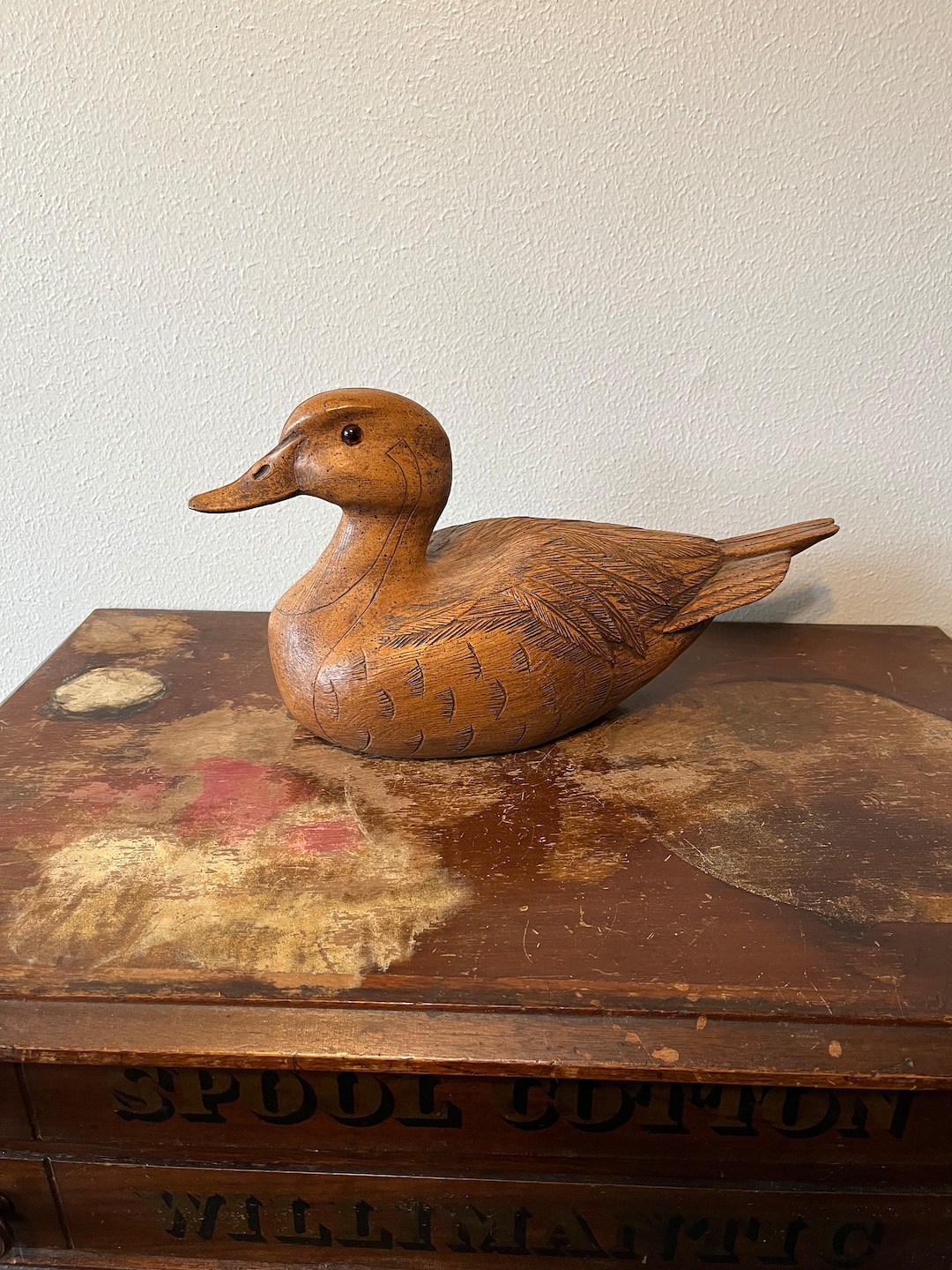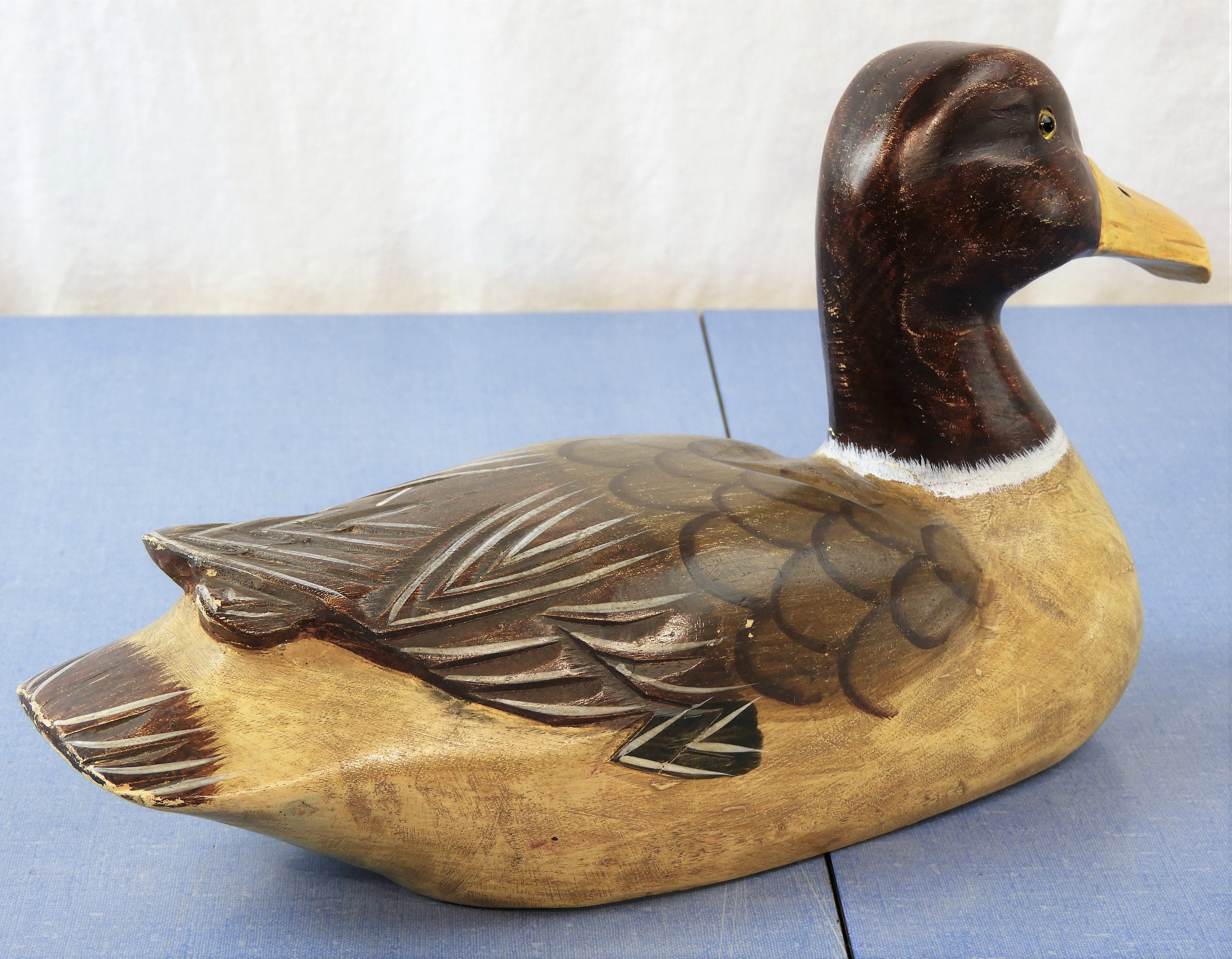A unique piece of history often captures our imagination. Vintage duck decoys embody such historical charm. They represent more than mere hunting tools. These handcrafted objects hold significant cultural value. Many collectors seek out vintage duck decoys. Their intricate details tell compelling stories. Each decoy reflects its maker’s skill. It also shows a specific region’s hunting traditions. This article explores the world of vintage duck decoys. We delve into their history. We discuss their craftsmanship. We also guide potential collectors. Understanding these aspects is crucial. It helps appreciate these remarkable artifacts. Discover why vintage duck decoys are so beloved. Explore their enduring appeal. [See also: The Art of Decoy Carving]

The Storied Past of Decoys
Decoys have a long history. Early decoys aided waterfowl hunting. Native Americans used various materials. They created effective lures. Reeds, grasses, and mud were common. European settlers adopted this practice. They adapted it with new materials. Wood became the primary medium. Carvers used local timber. Early 19th-century saw an increase. Commercial hunting fueled decoy production. Hunters needed many decoys. They needed them to attract birds. This era produced many vintage duck decoys. Each piece served a practical purpose. It helped secure vital food sources. The artistry grew over time. Decoys became more realistic. They reflected specific bird species. This evolution shaped the craft. It led to diverse styles. Decoy making became a specialized skill.
Craftsmanship and Materials
Crafting vintage duck decoys was an art. Carvers used specific woods. Cedar, pine, and balsa were popular. These woods offered buoyancy. They were also relatively easy to carve. Tools were often simple. A skilled hand was essential. Carvers meticulously shaped each decoy. They aimed for lifelike forms. Painting was another crucial step. Artists used natural pigments. They matched real bird plumage. Each brushstroke added detail. Some carvers achieved great fame. Their decoys are highly sought after today. The quality of materials varied. So did the level of finish. This diversity adds to their appeal. It makes collecting vintage duck decoys fascinating. [See also: Identifying Famous Decoy Carvers]
Regional Styles and Distinctive Forms
Vintage duck decoys display regional variations. Different areas developed unique styles. The Chesapeake Bay region is famous. Its carvers created distinct forms. New England carvers had their own approach. The Midwest also had prominent traditions. Each region favored certain bird species. They used specific carving techniques. Materials often reflected local availability. The paint schemes differed greatly. Some regions preferred robust, simple designs. Others focused on detailed, delicate work. These regional differences are important. Collectors study them closely. They help authenticate vintage duck decoys. They also add to their narrative richness. Understanding these nuances enriches the hobby.
- Chesapeake Bay: Known for practical, robust designs. Often made from pine or cedar.
- New England: Characterized by elegant, often hollow forms. Detailed feather painting.
- Illinois River: Distinctive flat-bottomed designs. Bold, contrasting paint patterns.
- Barnegat Bay: Often used local Atlantic white cedar. Sleek, effective profiles.
Types of Vintage Duck Decoys
Decoys represented many waterfowl species. Mallards, canvasbacks, and redheads were common. Black ducks and pintails also featured. Each species required specific rendering. Carvers paid attention to posture. They replicated distinct feather patterns. Dabbling ducks looked different. Diving ducks had unique profiles. Some decoys depicted sleeping birds. Others showed active, alert postures. The variety is immense. It reflects the diverse avian world. This diversity is a major draw. Collectors often specialize. They focus on specific species. Or they collect by particular regions. Understanding these types is key. It enhances the collection of vintage duck decoys. [See also: Common Waterfowl Species Depicted in Decoys]
Entering the Collector’s World
Collecting vintage duck decoys can be rewarding. New collectors should start small. Education is paramount. Learn about different carvers. Understand regional styles. Study condition and authenticity. Attend decoy shows. Visit antique shops. Online forums offer valuable insights. Join collector associations. Networking helps greatly. It connects you with experts. It provides access to resources. This hobby offers deep engagement. Each decoy has a unique story. It offers a tangible link to the past. Finding genuine vintage duck decoys requires patience. It also demands a keen eye.

What to Look For in Vintage Decoys
Several factors determine decoy value. Condition is always crucial. Original paint is highly prized. Minor wear is acceptable. Extensive repaint hurts value. Maker’s mark adds provenance. Some carvers signed their work. Knowing the carver is important. Damage reduces desirability. Cracks, chips, or repairs affect it. Patina is also valued. It shows natural aging. This adds to character. Research specific carvers. Understand their typical styles. Authenticity checks are vital. Be wary of reproductions. Consult experts if unsure. Investing time in research pays off. It ensures a worthwhile collection of vintage duck decoys.
- Original Paint: The most important factor for value.
- Condition: Minimal cracks, chips, or repairs.
- Carver Identification: Known carvers command higher prices.
- Patina: Natural aging and wear are desirable.
- Rarity: Scarce species or carvers increase value.
Authenticating Vintage Duck Decoys
Authenticity is key in collecting. Many fakes exist. Some reproductions are convincing. First, examine the wood. Old wood has a distinct feel. Look for consistent aging. Check for original paint layers. Fakes often have new paint. UV lights can reveal alterations. Study the carving style. Compare it to known examples. Expert appraisal is recommended. Reputable dealers offer genuine items. They also provide documentation. Provenance enhances value. It traces ownership history. Learning about common forgeries helps. This protects your investment. Authentic vintage duck decoys hold more value. They offer a deeper connection to history. [See also: Tips for Identifying Authentic Antiques]
Value and Investment Potential
The market for vintage duck decoys varies. High-grade examples fetch high prices. Decoys by master carvers are coveted. Their value can appreciate. Rarity plays a big role. Condition is equally important. Historical significance adds value. Provenance enhances desirability. Decoys with documented hunting history are special. Investment potential exists. It is not guaranteed. Collect for passion first. Any financial gain is a bonus. The joy of ownership is significant. It comes from preserving history. It supports a unique art form. Serious collectors understand this. They cherish their vintage duck decoys.
Displaying Your Collection
Displaying vintage duck decoys enhances their beauty. Consider various settings. A rustic cabin provides a natural fit. A modern home offers striking contrast. Shelves or display cases work well. Proper lighting highlights details. Protect them from direct sunlight. Avoid extreme temperature changes. This prevents damage. Displaying tells their story. It shares their artistry. It invites conversation. Arrange them thoughtfully. Group similar species. Or display by region. This creates visual interest. It educates visitors. Your vintage duck decoys become focal points. They transform any space.

Care and Preservation
Proper care ensures longevity. Vintage duck decoys are delicate. Dust regularly with a soft cloth. Avoid harsh chemicals. Maintain stable humidity levels. This prevents wood cracking. Keep them away from pests. Insects can damage wood. Store them carefully if not displayed. Wrap in acid-free materials. Avoid direct contact with plastic. Inspect them periodically. Address any issues promptly. Minor repairs should be professional. Preservation maintains their value. It respects their history. It ensures future generations can appreciate them. Caring for your vintage duck decoys is a commitment. It safeguards these precious artifacts.
The Enduring Appeal of Decoy Collecting
Collecting vintage duck decoys offers many rewards. It connects you to natural history. It reveals American folk art. Each decoy tells a unique tale. It speaks of a bygone era. The craftsmanship is admirable. The artistic expression is profound. It provides a tangible link to heritage. The community is welcoming. Shared passion fosters connections. Collectors swap stories. They share knowledge. The pursuit of rare pieces is thrilling. This hobby is deeply enriching. It offers continuous learning. It celebrates an important tradition. Vintage duck decoys are timeless treasures. Their legacy continues to captivate.
The world of vintage duck decoys is rich. It is filled with history. It boasts incredible artistry. From their utilitarian origins. To their status as coveted collectibles. Decoys offer a unique journey. They combine art, history, and nature. Collecting them is a passion. It is a dedication to preserving heritage. Whether you are a seasoned collector. Or a curious newcomer. The allure of vintage duck decoys is undeniable. They are truly enduring symbols. They represent a significant part of our past. Consider adding these treasures to your home. Enjoy their timeless beauty. [See also: The Future of Folk Art Collecting]
